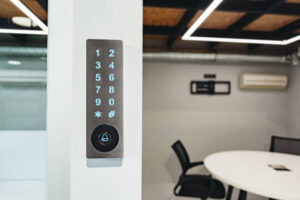Unlocking the Mysteries: A Dive into Lock-Picking Techniques
Ever wondered what it takes to crack high security door locks? Let’s embark on a journey through various lock-picking techniques. Imagine this scenario: You’re standing outside your home, keyless and desperate. The solution might be simpler than you think.
First off, let’s talk about raking. Picture a gardener raking leaves; it’s kind of like that but with more finesse and fewer blisters. Raking involves using a tool called a rake pick which is inserted into the lock’s keyway and moved back and forth quickly to set multiple pins at once. It’s fast but not always reliable for those tough-to-crack locks.
Now, onto single pin picking (SPP)—this technique is like solving a puzzle one piece at a time. Each pin in the lock has to be manipulated individually until they all align perfectly, allowing the lock to turn freely. It’s slow-going but often effective for stubborn locks.
Ever heard of bumping? No, it’s not dancing! Bumping uses specially designed keys known as bump keys that fit into many types of locks. With just a few taps from an object like a hammer or screwdriver handle, these keys can jolt the pins inside enough to unlock it without much effort.
Then there’s impressioning, which sounds fancy because it kind of is! This method requires creating an impression of the key by inserting blank keys into the lock repeatedly while applying torque until marks are made where cuts need to be filed down later on—a bit like sculpting in miniature form!

If you want something out-of-the-box (or rather out-of-the-lock), consider learning about lock snapping—a brute force approach usually aimed at euro cylinder locks commonly found in doors across Europe; essentially breaking part off so internal mechanism becomes exposed & easier manipulate manually afterwards—not subtle though!
A quirky yet practical trick some swear by involves using everyday items such as bobby pins or paper clips—the MacGyver approach if you will! These improvised tools work similarly traditional picks when bent appropriately; certainly worth trying before calling locksmith middle night…
Now, let’s talk about decoding. This method is often used on combination locks and involves figuring out the correct sequence by feeling for subtle changes in resistance or sound as you turn the dial. It’s like playing a high-stakes game of “hot and cold,” where every tiny click brings you closer to victory.
For those who prefer technology over tactile techniques, there’s electronic lock picking. Tools like electronic pick guns send rapid vibrations through the pins, mimicking manual picking but at lightning speed. These gadgets can be pricey but are worth their weight in gold when faced with stubborn locks.
Ever heard of shimming? This technique uses thin metal strips (shims) inserted between the lock body and shackle to disengage it without using a key—think of it as sliding into home base just before being tagged out!
Lastly, there’s something almost magical about magnetic manipulation, which employs strong magnets to manipulate internal components within certain types of locks—no physical contact required! It’s not exactly Hogwarts-level magic but close enough for us Muggles.
The Advanced Technology Behind Anti-Picking Features
When you think about high security door locks, your mind might conjure up images of hefty bolts and unyielding metal. But there’s more to these locks than meets the eye. Imagine a world where burglars, with their nimble fingers and cunning tools, are thwarted at every turn by ingenious mechanisms hidden within those very locks.
Let’s dive into some fascinating tech that keeps our doors secure. First off, we have spool pins – tiny but mighty components inside the lock cylinder. These little guys look like regular pins but have a thin middle section that creates an extra challenge for anyone trying to pick them. It’s akin to putting hurdles on a racetrack; each bump makes it harder for someone to get through.
Next up is the sidebar mechanism, which sounds like something out of a spy movie – and rightly so! This system uses small grooves along the key blade’s side in conjunction with matching protrusions inside the lock itself. If even one groove or protrusion doesn’t align perfectly? No dice! It’s as if you’re trying to solve a puzzle without all its pieces fitting together just right.
Now picture this: You’re watching TV late at night when suddenly you hear faint clicking noises from your front door. Your heart races because you’ve heard stories about how quickly skilled thieves can break in using bump keys or picking techniques. But here comes another hero – anti-bump technology! By incorporating specially designed springs and driver pins that resist sudden impacts, modern high-security locks laugh in the face of such attempts.
Then there’s magnetic locking systems – oh boy! Talk about wizardry behind closed doors (pun intended). Some advanced models use magnets both within the key and lock mechanism itself which must align correctly before granting access. It’s almost magical how seamlessly they work together yet remain impenetrable without proper alignment!
And let’s not forget about electronic locks. These aren’t your grandpa’s padlocks; we’re talking cutting-edge tech here. Imagine a lock that communicates with your smartphone, using encrypted signals to verify identity before unlocking. It’s like having a secret handshake with your door! Plus, many of these systems can alert you if someone tries to tamper with them – talk about peace of mind.
Now, have you ever heard of biometric locks? These bad boys use fingerprints or even retinal scans for access. It’s as if James Bond himself designed them! No more fumbling around for keys in the dark or worrying about losing them at the beach. Just place your finger on the scanner and voilà – you’re in!
But wait, there’s more! Some high-security locks come equipped with drill-resistant plates and hardened steel inserts to fend off brute force attacks. Picture trying to drill through Fort Knox; that’s what burglars face when they encounter these fortresses disguised as everyday locks.
And here’s a fun tidbit: some advanced models feature time-based locking mechanisms where certain doors only unlock during specified hours. Perfect for businesses needing restricted access after-hours or parents wanting to keep curious teens out of specific rooms.





